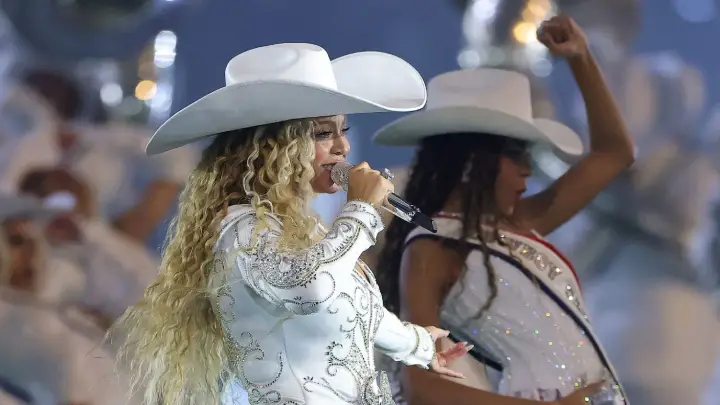NEW YORK, Aug. 9, 2025 — As ticket prices for major tours soar, more Americans are relying on buy now, pay later (BNPL) loans to attend concerts and festivals. But financial analysts warn the short-term convenience may carry long-term costs—and suggest a simpler alternative: a dedicated savings fund for live events.
The Rise of Concert Costs
The live entertainment industry has seen a sharp increase in ticket prices over the past few years, fueled in part by global superstars such as Taylor Swift, Beyoncé, and Coldplay embarking on massive world tours. Economists refer to the phenomenon as “”funflation”—the inflation of leisure and entertainment prices.
According to the U.S. Bureau of Labor Statistics, admission fees for concerts, theaters, and movies rose 3.9% in the 12 months ending June 2025. While a new Federal Trade Commission (FTC) rule introduced in May requires ticket sellers to display all fees upfront, experts say transparency doesn’t necessarily mean affordability.
“Consumers can now see the true price before checkout, but that doesn’t make the ticket itself any cheaper,” said Greg McBride, chief financial analyst at Bankrate.
Younger Generations Driving BNPL Use
A LendingTree survey of 2,050 U.S. adults found that 23% had used BNPL loans to pay for concert or festival tickets. The trend is strongest among younger generations:
- 37% of Gen Z (ages 18–28)
- 35% of Millennials (ages 29–44)
- 19% of Gen X (ages 45–60)
- 3% of Baby Boomers (ages 61–79)
For many young Americans, BNPL is a familiar and appealing option—especially when faced with limited budgets and high ticket demand.
Why BNPL Appeals to Concertgoers
BNPL services like Klarna, Afterpay, and Affirm allow customers to split payments into multiple installments, often without interest if paid on time. For a $300 ticket, that could mean paying $75 every two weeks instead of the full amount upfront.
But financial experts warn that not all BNPL plans are alike.
“Most installment plans are four payments, but some stretch much longer and come with interest rates as high as 36%,” said McBride. “Late fees can also be steep—sometimes up to 25% of the purchase price.”
According to NerdWallet, BNPL providers may also charge $15 or more for late or rescheduled payments.
Credit Cards vs. BNPL for Tickets
Credit cards remain another popular option for ticket purchases, with 65% of concertgoers saying they plan to use credit card rewards to offset event costs, according to LendingTree.
While average credit card interest rates hover above 20% (Bankrate), many cards offer:
- Purchase protection for event cancellations.
- Rewards programs with cashback, points, or miles.
- Sign-up bonuses for new cardholders that can cover partial ticket costs.
“If a concert gets canceled, it’s often easier to get your money back with a credit card than through a BNPL service,” McBride noted.
The ‘Beyoncé Fund’ Strategy
Matt Schulz, chief credit analyst at LendingTree, suggests avoiding financing altogether by creating a dedicated savings account for concerts and festivals.
“Carve out money in your budget as your ‘Beyoncé fund’ or your ‘Taylor Swift fund,’” Schulz advised. “If live music is important to you, treat it like any other financial goal.”
For example, setting aside just $25 a month would create a $300 fund in a year—enough to cover a high-demand ticket without borrowing.
Case Studies: BNPL vs. Savings
Case 1—The Quick Split:
Emily, 26, used BNPL to pay for two festival tickets totaling $500. With no interest, she paid $125 every two weeks but admits the installments made her overspend on other trip costs.
Case 2—The Saver:
Michael, 32, used an automated transfer to a “concert fund” for 18 months, saving $600. When his favorite artist announced a tour, he bought the ticket outright and avoided extra fees.
Case 3—The Credit Card Strategist:
Sarah, 29, used a new rewards card with a 0% interest offer for 12 months. She earned enough points for free airfare to the concert city, paying off the ticket balance over eight months with no interest.
Risks of Relying on BNPL
While BNPL offers convenience, it can encourage impulse spending and create “phantom debt”—small recurring payments that add up across multiple purchases.
“People often underestimate how many BNPL plans they have active,” said McBride. “When bills come due all at once, it can strain a monthly budget.”
BNPL accounts may also affect credit if missed payments are reported to credit bureaus.
How to Budget for Big-Ticket Events
Financial planners recommend:
- Set a Monthly Concert Savings Goal: Treat it like a utility bill you pay yourself.
- Automate Transfers: Move funds directly into a separate account to avoid temptation.
- Use Credit Cards Strategically: Only if you can pay in full or take advantage of 0% APR offers.
- Track BNPL Balances: Keep a log of active installment plans to avoid overcommitment.
- Shop Early: Early bird pricing or presales often offer lower ticket costs.
The Future of Concert Financing
Experts expect BNPL use for events to remain high, especially among younger audiences who prioritize experiences over physical goods. However, as interest rates and late fees draw more scrutiny, regulators may impose new rules on BNPL providers.
For now, the safest approach remains building a dedicated fund—whether for Beyoncé, Taylor Swift, or any dream event.
“You’ll enjoy the show more knowing it’s already paid for,” Schulz said.






